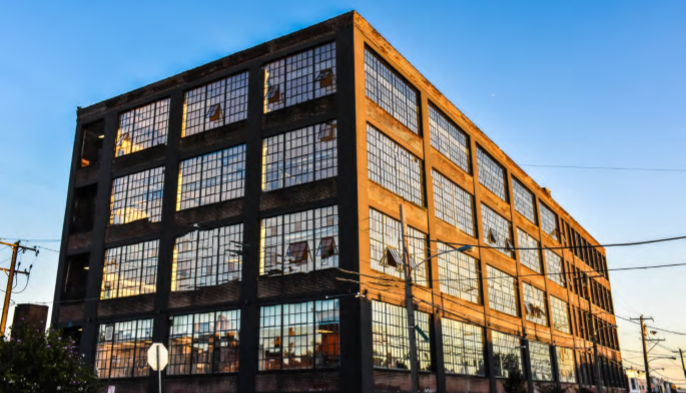Organizing Opportunity: How to Drive Responsible Real Estate Investment in Opportunity Zones
By Bruce Katz and Michael Saadine
August 2, 2019
 The MaKen South redevelopment in Philadelphia. The MaKen Studios are a project of Shift Capital, a real estate impact group dedicated to revitalizing urban neighborhoods through an inclusive and concentrated development model.
The MaKen South redevelopment in Philadelphia. The MaKen Studios are a project of Shift Capital, a real estate impact group dedicated to revitalizing urban neighborhoods through an inclusive and concentrated development model.
Tax-advantaged real estate investment in Opportunity Zones has advanced from page 130 in the tax bill to the front page of the papers, and is now becoming a reality. In late 2018, fundraising announcements became commonplace and investors began diverting gains into qualified vehicles, and now construction is beginning on qualified projects. As much as we may be tempted to treat Opportunity Zones and the projects within them as a uniform asset class, in actuality the tool presents a diverse range of possibilities. The evolution of the market will bring wide variance across cities and their potential projects. With the fervor continuing to grow, we believe investors, economic development practitioners, elected officials, and others seeking to capitalize on the incentive need ordered thinking to understand and efficiently leverage a national landscape of over 8,700 tracts.
The Opportunity Zone tax incentive exists because current private capital markets solutions are failing to reach certain high-potential but historically underinvested parts of the country. Capital that is low on the risk-return spectrum tends to park in stabilized long-term assets in traditional geographies, often in entities driven as much by fee generation as value creation. Higher-cost capital rehabilitates or builds assets over short-term hold periods to generate elevated returns, or simply trades assets based on market timing. The markets do not provide a solution with the unique combination of risk appetite and patience to perform complex residential and commercial projects that accommodate underserved renters in evolving neighborhoods.
Whether focused on mixed-income units in housing-deficient gateway markets, knowledge sector office space in high-growth secondary markets, or catalytic downtown space in exindustrial markets, Opportunity Zone incentives have the potential to enhance the private sector’s economic value creation and social impact by filling this capital gap. The tool provides incentives to understand emerging neighborhoods as well as intricate public-private capital stacks. Its structure rewards long-term involvement, which will filter capital towards the highest quality, most locally engaged operators. Investors and their operating partners will make ten-year instead of four-year choices when it comes to quality of construction, community engagement, and overall neighborhood improvement. As with any federal subsidy, misuses and bad actors will emerge, but we believe the incentive’s filter of complicated, nuanced projects should necessitate and reward responsible investors
Full Report: Organizing Opportunity [PDF]